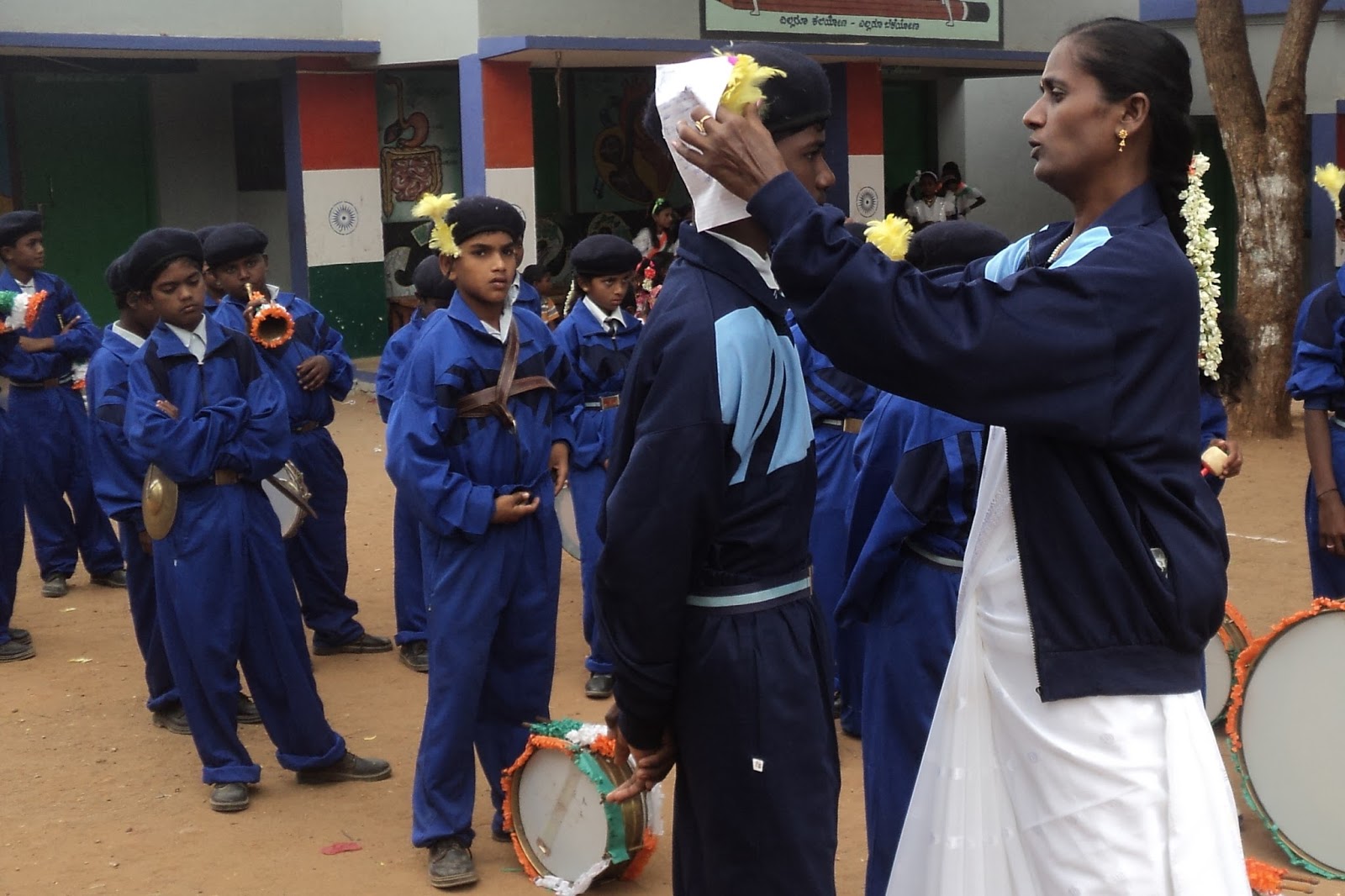I had a privilege of being invited as the chief
guest for the Independence Day celebration at Govt. School Halemarthalli, in a
valley near Male Mahadeshwara hills. Children were in their fullest of spirits-
neatly bathed and dressed up in whites. They were all profusely dusted with
super white chalk and the girls had conspicuous red patches on their cheeks. The
teachers were also at their best and were involved in putting up for the
ceremony. The head master gave a call over the microphone and the entire
community started gathering in the school premises. The elected representatives
and the members of the school betterment committee occupied the chairs across a
table that made the dais.
The colourful march-past began to the
rhythm of the school band which was setting up a trance and even building up. The
elected representative hoisted the flag. The kids were doing exactly what the
armed forces or the policemen did in front of their commandants.
Watching the parade from the dais I slipped
into the memories of my childhood. We too would undergo a sort of regimental
training for a week in the month of August. We enacted the very same parade as
these kids. I wondered why we do this! After all, we were all civilians gathered
to hoist the flag and the Independence Day was a common man’s celebration and
that of the state like the Republic Day. Well, how could this practice been
absorbed into our psyche? Such
celebrations were a custom of the British regiment in the cantonment areas.
Indians who obeyed the English and had their etiquettes were part of the
ceremony. People who worked for the
British officers and later children of Indian officers who could school in the
Cant became part of these practices. The others were not even let into the
area. For a common Indian it must have
been a great adventure to even see such practices. As the British clout rose,
it must have been a routine even around the last picket. People must have
watched the parade go from across the compound walls just like the people who stacked
upon the school compound wall here. So many of them might have developed an
ambition to be part of the celebration- to salute and be saluted.


There was a series of spectacular dance by
the children to filmy patriotic songs. Apart from songs in Kannada there were
songs in Tamil, Marathi and Rajasthani which the children had learnt by
themselves. The community was largely made up of Tamil speaking Christians. The
mother tongue of the teacher who did a wonderful job of compeering in Kannada
was Urdu. What was moving was the fact that the celebration was funded by the
parents. Mr. Kandasamy a senior citizen
who had worked in a stone quarry had presented all the prizes for distribution.
The spectators were made up of women and children, men who had nothing to do in
this season without rains.They missed the rains for three consecutive years! Their fields were all ploughed and prepared but
there weren’t any rains to initiate sowing. Their only assured rains were in
the month of October during the North east Monsoon. With all the granite
quarries gradually winding up were really out of jobs. The adjoining forests
were declared national park and protected for tiger and the Elephants barring
their entry into them for grazing. Yet they held back to their village while so
many of their neighbors had left to the big towns in all directions looking for
jobs. But these people must have had no choice but hold to their posts in anticipation
of some minimal rewards of Independent India.
-Narrated by Manu K



No comments:
Post a Comment